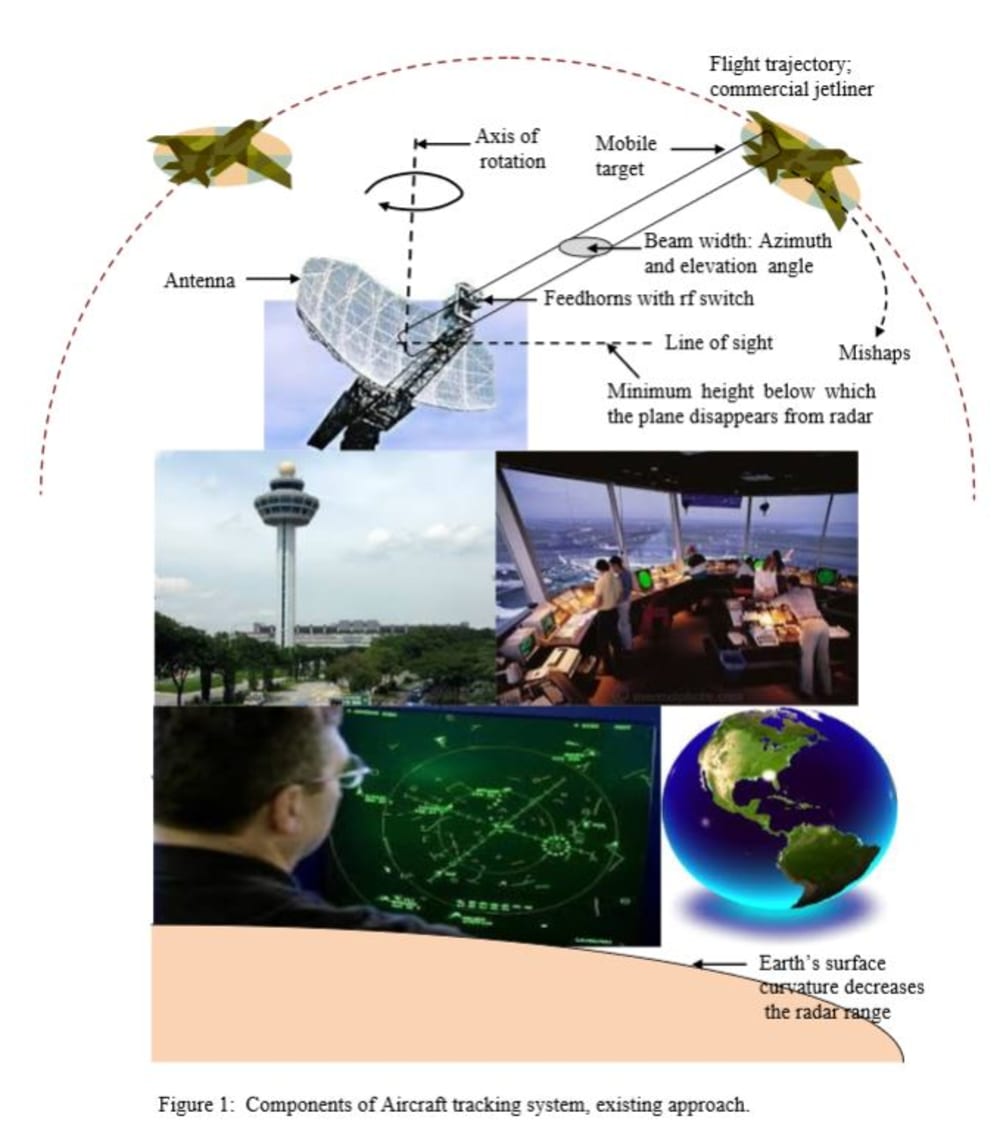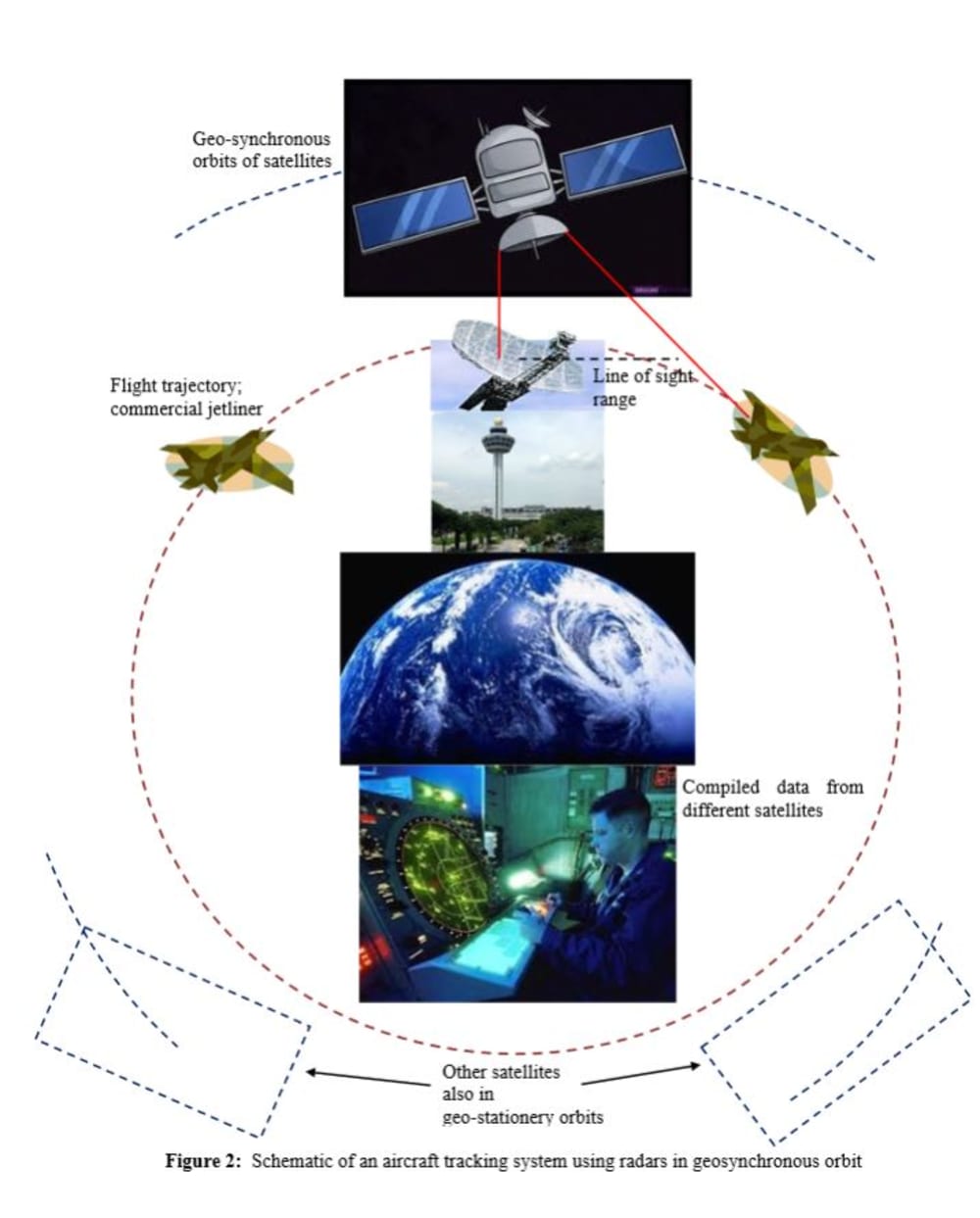This invention is about keeping track of commercial aircraft that support air traffic; passenger jetliners to transport people and cargo planes to transport goods. At present, when these aircraft take-off from runways, their flights are monitored by attendants in flight control towers for a brief interval, approximately 30 minutes. At the end of this period, the aircraft cross a distance of more than 50 miles. Then, pilots have the option to communicate with airport staff via a radio link. In case of an emergency, this radio channel could fail. The communication failure, the pilot/crew of the aircraft face a helpless situation. Often the emergency could arise due to mechanical system and hardware/software failure. The situation is further debilitated if the failure leads to complete loss of aircraft control by the crew and the pilot.
In Figure 1, a photograph of a conventional aircraft tracking system which employs radar stationed on a flight control tower at an airport facility is displayed. Major components of this system are a land based radar; a monitor screen that shows among many parameters; the distance of the plane from the airport; the space coordinates; azimuth, altitude, local time and the speed of plane in flight, and an observer, a flight attendant. In Figure 2, components of the system proposed by this invention is indicated. A primary difference between two systems is, in addition to the land based radar signaling for monitoring condition of planes during landing and after take-off, the planes are tracked by a space based radar system. The radars are located on satellites at very high elevations. The status of flights of planes are continuously monitored during entire duration of flight because the tracking range of satellite based radar system exceeds 2000 miles.
A typical existing radar system to monitor and instruct flight crew of a passenger carrying aircraft is shown in Figure 1. The radar equipments are installed on a flight control tower near an airport, a surveillance facility. Air traffic from the airport during both, take-off and landing planes are continuously monitored by air traffic control staff members. One of the main disadvantage of this land based radar system is, it has very limited observation capability. The radar signals are not reflected from planes that are beyond line of sight distance due to the Earth’s curvature. Therefore, once the aircraft leaves the vicinity of airport from which it departed until it reaches to the destination airport, the communication between pilots and air traffic controllers is discontinued.
An aircraft tracking system to monitor air traffic using radar systems deployed on satellites orbiting the Earth is displayed in Figure 2. Major components of this system are, radars in space mounted on a satellite; a control center to correlate and analyze the data received from radars of multiple satellites and associated computing hardware/software platform. A significant advantage of space based radar tracking air traffic is the computer center to process data received from satellites can be located anywhere in the city.
Like this entry?
-
About the Entrant
- Name:Shailesh Kadakia
- Type of entry:individual
- Software used for this entry:http://www.skylativity.com
- Patent status:pending





